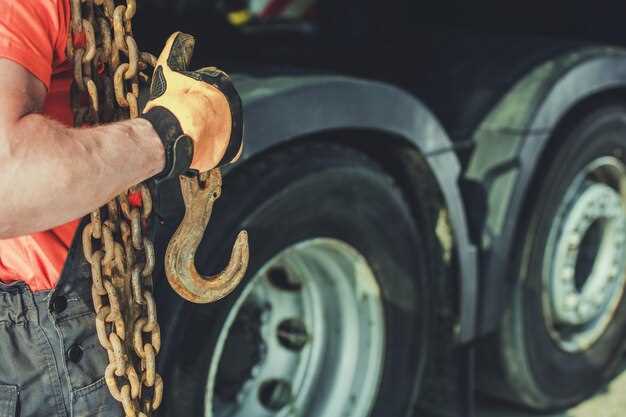
The use of hook and chain towing systems is a common practice in various industries, particularly in the automotive sector. While these systems can effectively move heavy loads, it is crucial to understand the associated risks and potential for damage during the towing process. Proper handling and techniques are essential to ensure safety and minimize the chance of incidents.
One of the primary advantages of hook and chain towing is its ability to manage substantial weight and provide a strong connection between the towing vehicle and the terrain. However, this method also poses certain drawbacks. The likelihood of equipment failure or improper attachment can lead to accidents, increasing the risk of damage not only to the vehicles involved but also to nearby property and personnel.
In summary, while hook and chain towing offers significant benefits in terms of efficiency and strength, it is essential to weigh these advantages against the inherent risks. Careful consideration and adherence to safety protocols can mitigate potential issues and enhance the effectiveness of this towing method.
Understanding the Mechanics of Hook and Chain Towing

Hook and chain towing is a commonly used method for transporting vehicles or heavy equipment. The mechanics behind this technique involve connecting the towed object to a towing vehicle using a robust hook and sturdy chains. This setup allows for secure attachment, enabling the towing vehicle to pull the load effectively.
One of the primary components is the hook, which is designed to provide a solid point of connection. It needs to be made from high-strength materials to withstand the stresses involved during towing. Relying on a reliable hook is crucial, as failure at this connection point can lead to accidents and increased risk of damage not only to the towed object but also to other road users.
The chains used in this method are equally important. They must be rated to handle the specific weight of the load being towed. If the chains are insufficiently rated, they can break under pressure, leading to dangerous instances of loss of control. Therefore, selecting appropriate and well-maintained chains minimizes risks associated with towing operations.
Despite its effectiveness, hook and chain towing also presents challenges. The risk of vehicle damage increases if the towing angle is incorrect or if there is excessive force applied during the tow. Proper training and knowledge of mechanics are essential to mitigate these risks and ensure safe towing practices.
Assessing the Risks of Damage in Hook Towing Scenarios

When utilizing hook towing methods, understanding the inherent risks is crucial for minimizing potential damage. The hook serves as a critical connection between the towing vehicle and the load, making it susceptible to various stress factors during operation.
One significant risk involves the integrity of the hook itself. Overloading the hook can lead to metal fatigue, deformation, or even failure during towing. Proper weight assessment prior to towing is essential to prevent exceeding the hook’s rated capacity.
Another concern is the possibility of dynamic loads, which can occur due to sudden stops, sharp turns, or uneven terrain. These forces can place additional strain on both the hook and the towing vehicle. It is vital to ensure that towing practices are adjusted to accommodate these changing conditions, as this can prevent accidents and damage.
Furthermore, improper attachment or alignment of the hook can lead to uncontrolled movements of the load, resulting in potential damage to both the towed object and the towing vehicle. Ensuring that connections are secure and correctly aligned reduces the risk of such incidents.
Environmental factors also contribute to risk levels in hook towing scenarios. Weather conditions, such as rain or snow, can affect traction and increase the likelihood of slippage. Operators must be vigilant and prepared to adapt their techniques based on environmental challenges to mitigate risks effectively.
In summary, assessing the risks associated with hook towing requires a comprehensive understanding of load limits, operational conditions, proper equipment maintenance, and environmental influences. By addressing these factors, the likelihood of damage during towing scenarios can be significantly reduced.
Comparing Hook Towing with Alternative Towing Methods
When evaluating towing methods, it is essential to compare hook towing with alternative techniques to understand their benefits and risks associated with damage control.
Hook towing is a traditional method widely used due to its simplicity and effectiveness. However, it is crucial to examine how it stands against other towing methods like chain towing, ball and socket towing, and flatbed towing.
-
Hook Towing:
- Advantages:
- Quick setup and ease of use.
- Cost-effective for standard towing needs.
- Risks:
- Potential for damage to the towing vehicle if improper techniques are used.
- Risk of disconnection if hooks are not securely fastened.
- Advantages:
-
Chain Towing:
- Advantages:
- Strong and durable for heavy loads.
- Less chance for the tow to slip under high tension.
- Risks:
- Possibility of damage to both vehicles if not carefully managed.
- Heavier and bulkier, which may require more effort during setup.
- Advantages:
-
Ball and Socket Towing:
- Advantages:
- Provides a smoother ride and better control while towing.
- Reduces wear on both vehicles involved.
- Risks:
- Can still result in damage if the coupling is not properly adjusted.
- More complex setup may lead to increased time and frustration.
- Advantages:
-
Flatbed Towing:
- Advantages:
- Least risk of damage to the towed vehicle as it is fully supported.
- Ideal for vehicles that cannot be towed using standard methods.
- Risks:
- Higher cost compared to other towing options.
- Requires additional space and specific equipment.
- Advantages:
In conclusion, each towing method has its unique advantages and risks. Hook towing is effective for specific situations but carries potential risks of damage that must be managed through proper practices. Alternative methods, while differing in setup and efficiency, also present their own challenges and benefits that warrant careful consideration based on the towing requirements.



